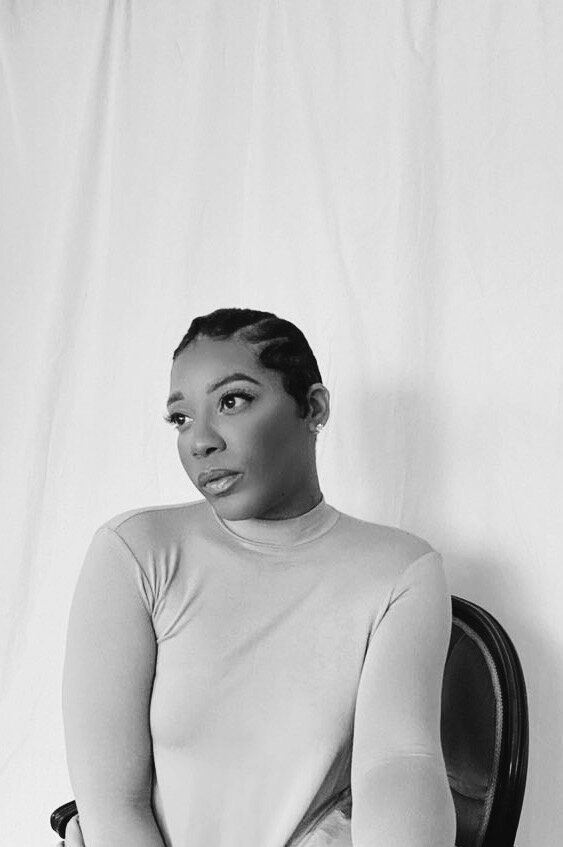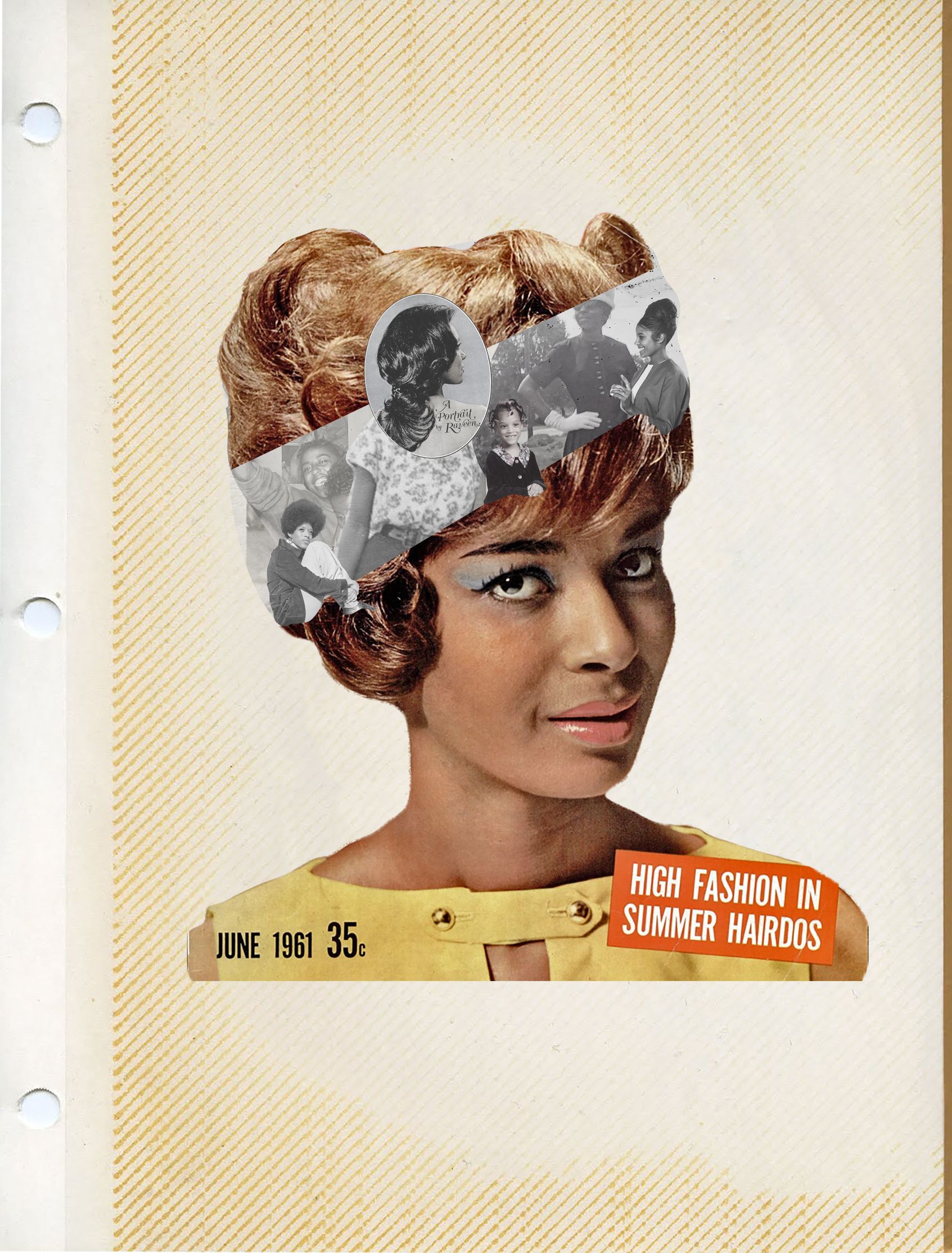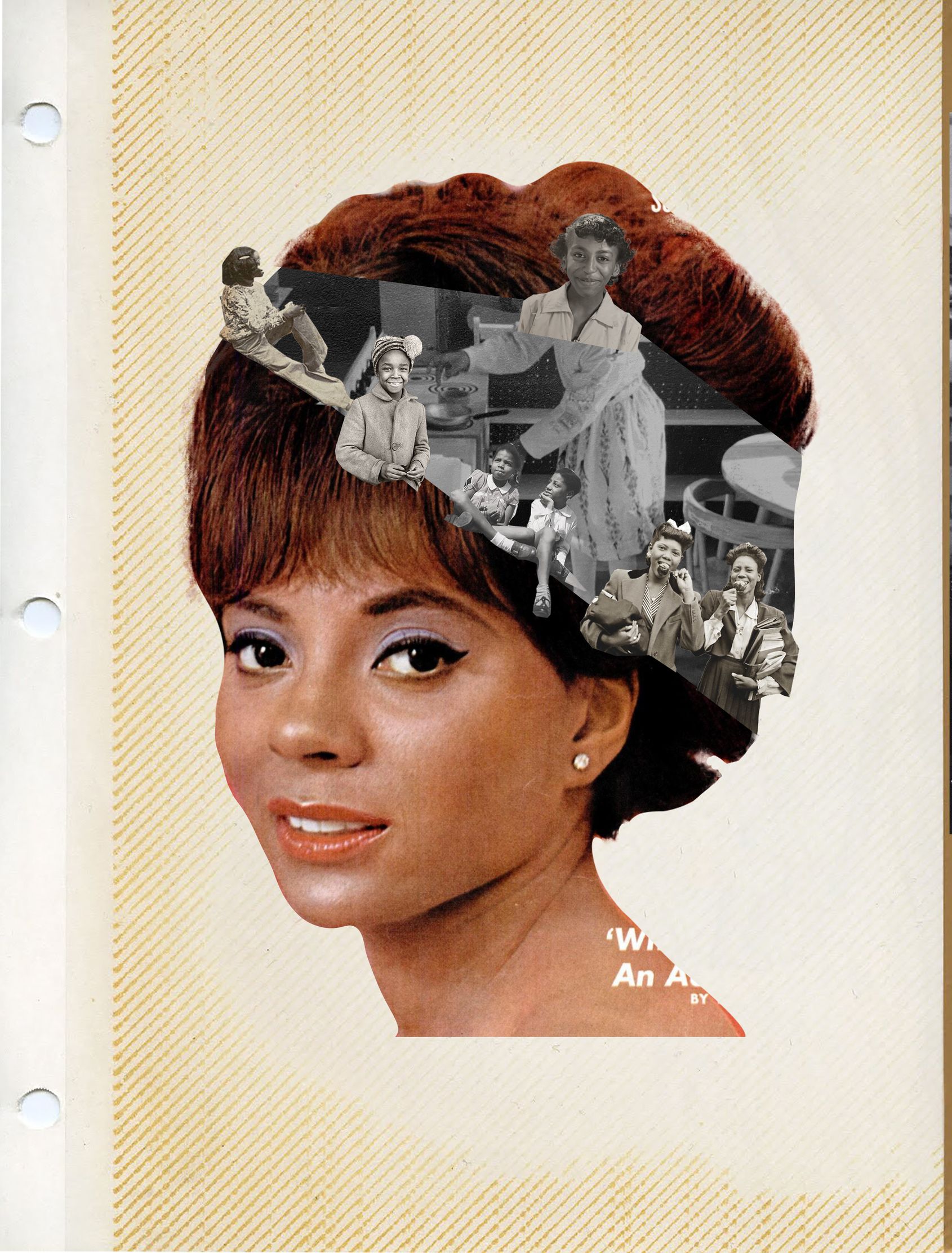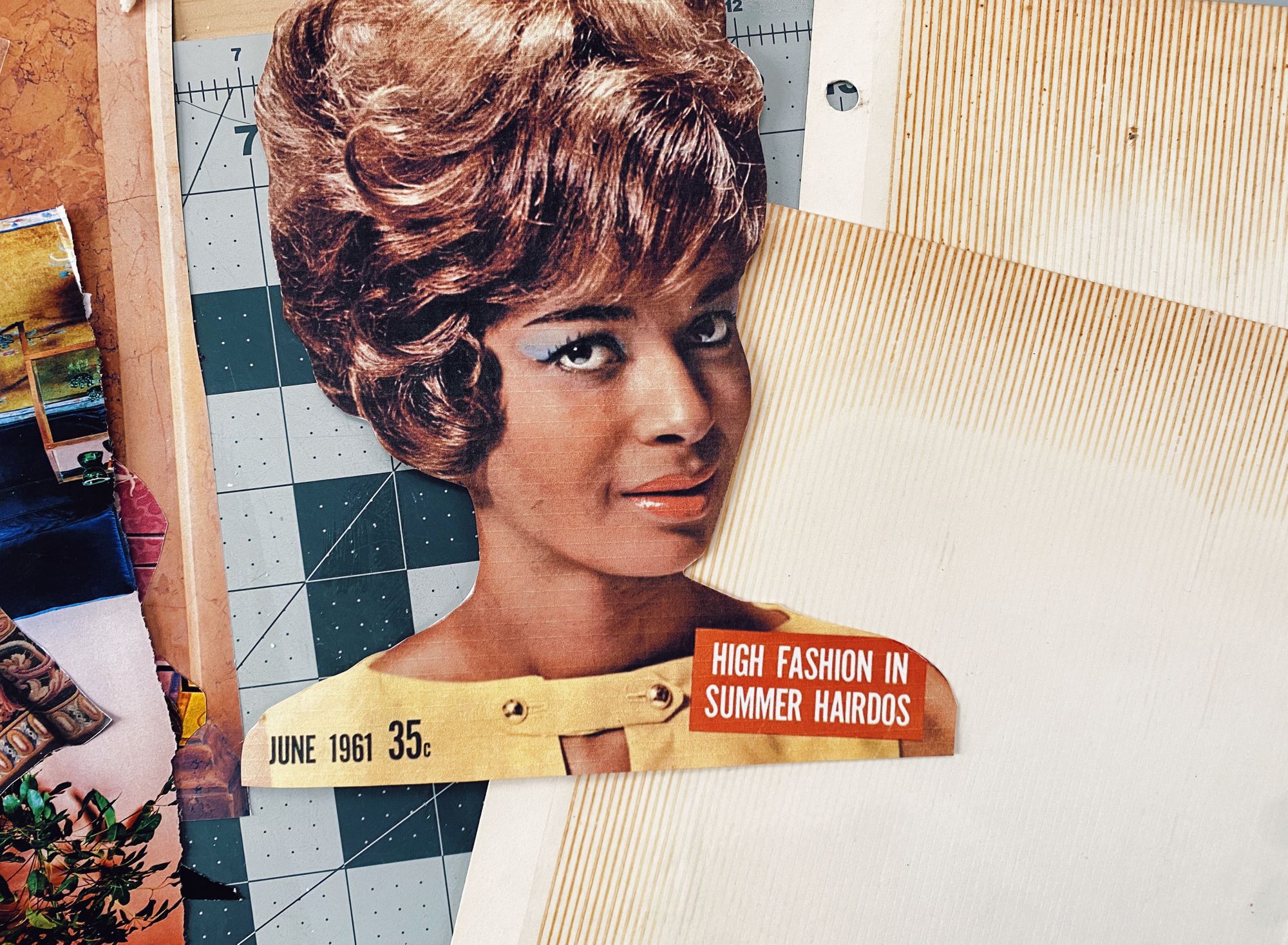
Shefon Taylor
Shefon Taylor (b. 1988, Wilmington, DE) has rooted her practice in work that draws on narratives concerning longing, rememory, and the anterior. Interrogating personal definitions of femininity and womanhood, Taylor began her creative journey as a visual artist in 2017, using found images to explore the opaque and poetic themes to arrive at an understanding of her present life, the lives of the women before her, and the possibilities of an imagined future. Her process and practice are informed by the discovery and affirmation, “may the women with whom I share blood, speak my name and never find themselves alone.”
Taylor is self-represented outside of Los Angeles, CA where she is represented by ParisTexasLA. The artist works and lives in Wilmington, Delaware.
Shefon's website | Follow her on Instagram | Become a collector via Artwork Archive

Collage on Photo Album Board

Collage on Photo Album Board
Statement
To survive the present, we work to shift, rearrange and reconsider the pieces of ourselves in search of something new, with the hope of arriving at our imagined future. Yet, this work also requires us to rely on the exploration and acceptance of the past. In that exploration, we encounter gaps where time is forgotten or yet to be remembered.
In those gaps, we bridge them with rememory. Introduced in her novel, Beloved, Toni Morrison refers to the concept of rememory as "recollecting and remembering as in reassembling the members of the body, the family, the population of the past."
I imagine art as designing and building time, constructing a bridge across the gaps of memory. These final works are a visual representation of what it means to live as a memory in the memory of another. They will illustrate how we use the scraps of rememory to construct a bridge between ourselves and another, this world and the next.
In The Studio With Shefon
How does your work explore the limits of the archive?
While it is still learning to translate itself in the work, my practice is often searching for a past moment in women's lives connected to my own in the present. In this instance, the limit of the archive feels like time (or memory). I only understand these women in the context of my own life, in relationship to me, or a particular moment in theirs. I'm deeply concerned with their interior life (i.e., dreams, fears, desires...) in a moment before this one.
When thinking about time, are you in relation to in a linear or spatial aspect?
Spatial, for sure.
How does time move across your work?
I believe I am constantly traveling a memory in my work or that my practice is attempting to do the work of remembering. Whether past or future, it is trying to recollect.
How is time significant to the theme bridge?
I imagine art as creating and building time, constructing a bridge across the gaps of memory.
Explore more of Shefon's research on the residency theme "Bridge", archives and more here.
Shefon Taylor x Diishan Imira
Biggest Takeaway: An Affinity for Freedom
As a culmination of her Digital residency Shefon led an interview with Founder of Mayvenn, Diishan Imira. Read how his company is a "Bridge" between hairstylist and their work.

With parents who Diishan would describe as "hippie" and "social activists," Diishan introduces the value taught to him that he considers foundational to entrepreneurship, freedom.
Diishan notes that he was raised to 'want to be free' and with a 'sense of obligation to the community' and in a home with deep anti-capitalist beliefs. Although he developed his own understanding of the world as an adult, he decided that his economic independence and a desire to avoid corporate environments were priorities. He believes that the only way within this construct of civilization to have power over your life is through economic empowerment, which translates to ownership.
The creation of Mayvenn was about the creation of an economic engine that allows for his own independence and hairstylists. In his work, he desires to generate wealth and support the community.
When asked about how he arrived at hair, he notes that his desire to build wealth within Black communities led to the beauty industry due to such large consumption. He considers hairstylists the backbone of Black entrepreneurship and recognized a problem within that community that needed to be solved.
In the conversation of technology, Diishan mentions that Diishan can describe tech in one word: efficiency. While artists do not spend a lot of time thinking about efficiency due to their approach of passion first, technology can aid in the efficiency of art-making. Diishan believes that you can do what you love but within that, do some of the things you hate to make it work. Technology makes the work sustainable.
Diishan hopes that Mayvenn is building a bridge between hairstylists' passion and the flourishing of their own businesses. A bridge between entrepreneurs 'being in their business' and 'working on their business’.
written by Shefon Taylor